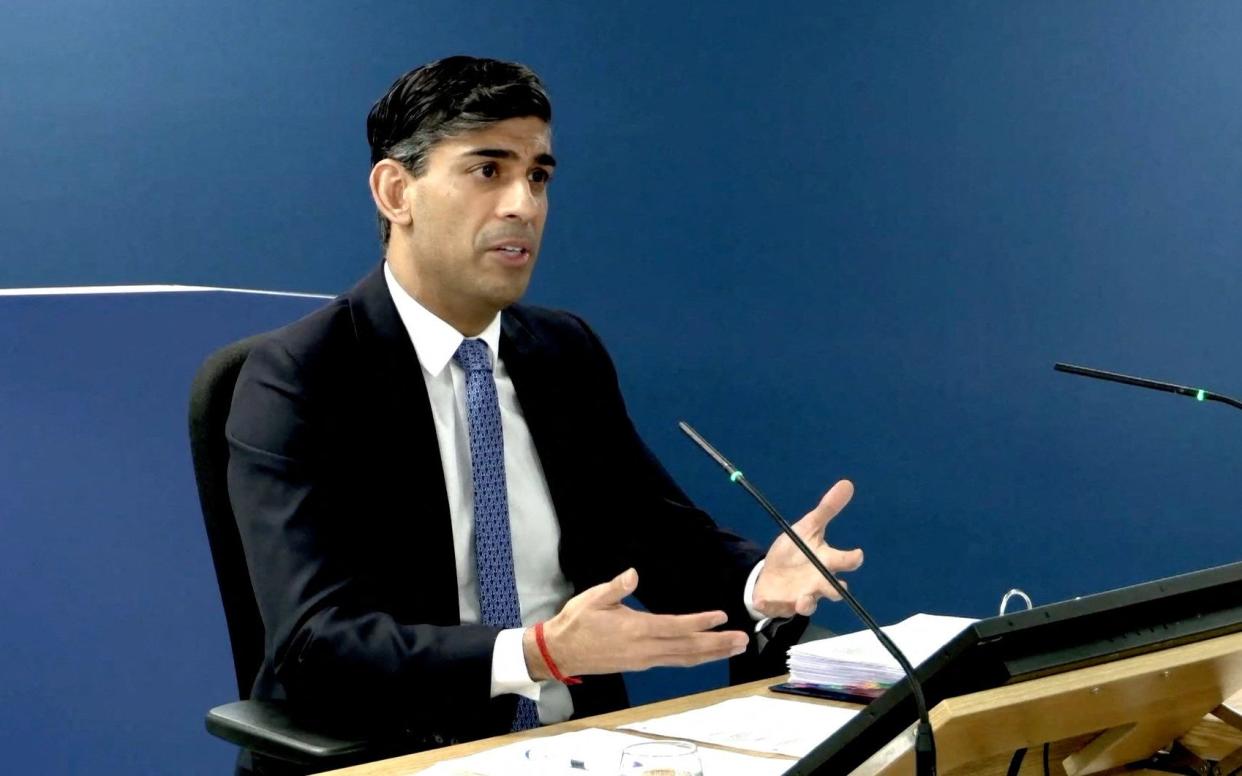The Covid Inquiry is ignoring the one number that would blow lockdown out of the water

- Oops!Something went wrong.Please try again later.
The single most revealing exchange in the Covid Inquiry took place on Monday. Rishi Sunak highlighted a study that suggested more quality adjusted life years (QALYs) would be taken by the first lockdown than the virus itself. This was a significant admission, and one that we might have assumed KC Hugo Keith would want to explore further.
Instead, he shut the Prime Minister down with unerring speed, stating that he was not interested in this approach – inaccurately labelling them as “quality life assurance models”.
It was an astonishing sight. Here we have the most powerful person in the country, rightly raising the possibility that the cure was more harmful than the disease. Sunak, who to his credit was one of the more sceptical of restrictions in cabinet throughout, surely understood the significance of what he was saying. He brought the study to attention very deliberately. The bottom line in the cost-benefit analysis of the lockdown in the UK, published in 2020, was negative in every scenario.
Quality-adjusted life years are exactly how the “success” of lockdown should be measured. This is not a fringe opinion– this measurement has been widely deployed to assess the value of various medical interventions in any resource-limited health system. Difficult decisions need to be taken and trade-offs made. To deny that is to deny reality.
QALYs simply estimate how many years a certain intervention will save or take, including a calculation of the quality of that time. It’s not a perfect metric, but it’s the best we’ve got.
This logic should have been applied to lockdown, however cruel or callous it may appear. On the whole, the lives and wellbeing of the young were sacrificed to protect the elderly, and not even particularly successfully when we consider the misery and suffering millions of older people endured.
It is my estimate that more life-years will be lost from delays in cancer diagnosis and treatment alone than were taken by the virus, and this is just one tiny fraction of lockdown’s collateral damage. Honestly, I cannot understand how anybody in good faith can now argue that restrictions saved more life-years than they saved – it simply does not seem credible.
We are faced with one of two disturbing truths about this so-called “inquiry”. Either its staff genuinely don’t understand the concept of a QALY analysis, in which case they should not hold the position they do. Or, perhaps worse, they are very deliberately steering the investigation’s discourse in order to come to a conclusion that would suit all involved.
I suspect, sadly, it’s the latter. From day one, it has acted as a political witch-hunt with no desire to ask, never mind answer, the fundamental questions. The whole point of this circus is to ensure that we are better prepared for the next pandemic, if or when one arrives. We are painfully far away from achieving that.
When a point of genuine significance is raised, by the Prime Minister no less, it is ushered away and out of sight. Worse still, Sunak was only referring to the first lockdown. Had that calculation been spread across the almost two years of disproportionate restrictions, the conclusion would be even more overwhelming.
This sham inquiry is achieving nothing apart from protecting reputations and lining lawyers pockets. It is a genuine embarrassment. Sunak’s intervention should be the basis for an entire new inquiry, one which explores a proper cost-benefit analysis of those two dreadful years. I think we all know what conclusion it would come to.

